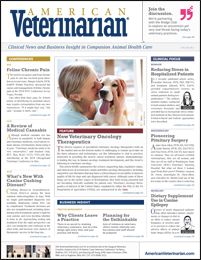EIA Is Confirmed in Multiple Texas Counties

The Texas Animal Health Commission (TAHC) and the Equine Disease Communication Center confirmed multiple cases of equine infectious anemia (EIA) in Texas horses last year. The cases, initially diagnosed in March 2018, occurred in several coun­ties throughout the state.
A viral disease with no vaccine or cure, EIA attacks a horse’s immune system. It can be transmitted from an infected to a noninfected animal via biting flies, through the use of unsterilized or contaminated medical instruments, or via a blood transfusion. The disease does not affect people.
Signs of EIA are nonspecific and include fever (>105°F), depression, edema, anorexia, fatigue, mucosal petechial hemorrhages, and rapid breathing. Horses that contract the disease die, are euthanized, or must be quarantined for the rest of their lives.
By law, EIA is a reportable disease. All positive cases must be filed with the state veterinarian and the federal Animal and Plant Health Inspection Service. TAHC staff is working with affected horse owners and veterinarians in Texas to monitor potentially exposed horses and implement biosecurity measures.
